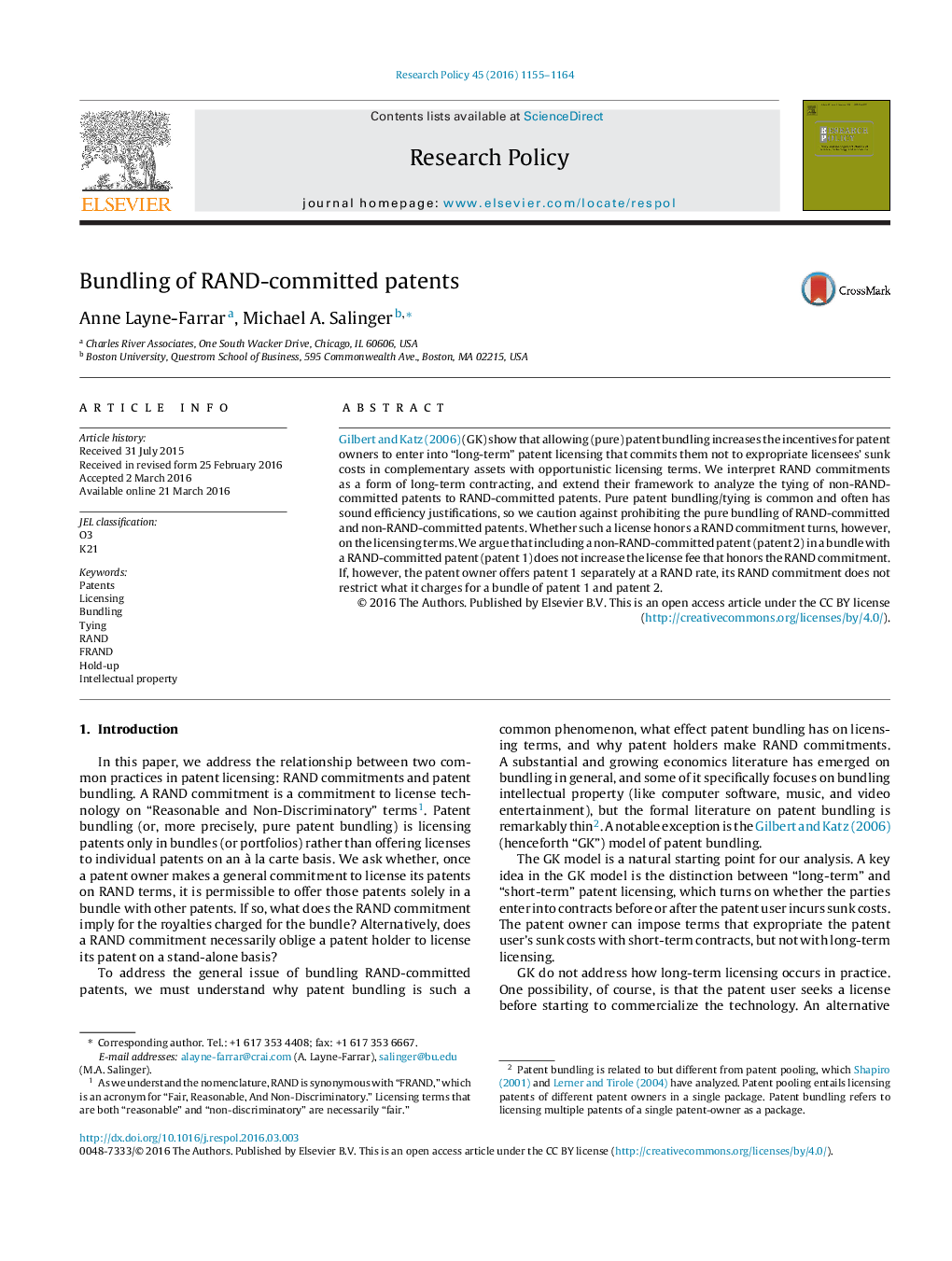| Article ID | Journal | Published Year | Pages | File Type |
|---|---|---|---|---|
| 10482913 | Research Policy | 2016 | 10 Pages |
Abstract
Gilbert and Katz (2006) (GK) show that allowing (pure) patent bundling increases the incentives for patent owners to enter into “long-term” patent licensing that commits them not to expropriate licensees' sunk costs in complementary assets with opportunistic licensing terms. We interpret RAND commitments as a form of long-term contracting, and extend their framework to analyze the tying of non-RAND-committed patents to RAND-committed patents. Pure patent bundling/tying is common and often has sound efficiency justifications, so we caution against prohibiting the pure bundling of RAND-committed and non-RAND-committed patents. Whether such a license honors a RAND commitment turns, however, on the licensing terms. We argue that including a non-RAND-committed patent (patent 2) in a bundle with a RAND-committed patent (patent 1) does not increase the license fee that honors the RAND commitment. If, however, the patent owner offers patent 1 separately at a RAND rate, its RAND commitment does not restrict what it charges for a bundle of patent 1 and patent 2.
Related Topics
Social Sciences and Humanities
Business, Management and Accounting
Business and International Management
Authors
Anne Layne-Farrar, Michael A. Salinger,
